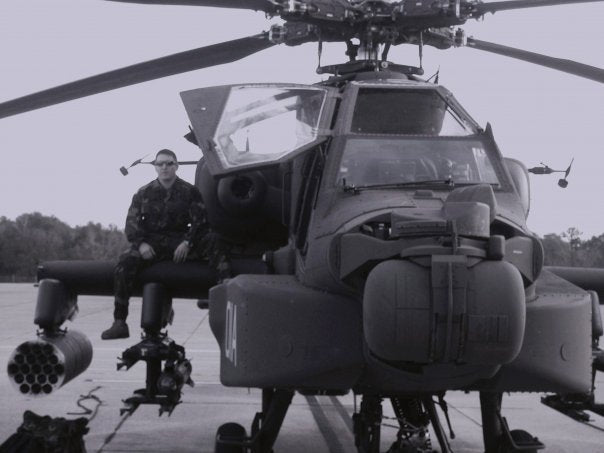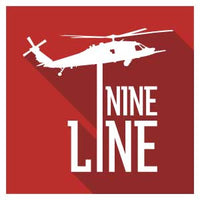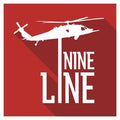Nine Line Medevac - What Is Nine Line?


Recently, we have been asked why our company is called Nine Line Apparel. This is why we are Nine Line:
9 Line is a military term that Medevacs use for calling in a combat injury. Because it is such a stressful and sometimes hectic situation, 9 line is the best way to calmly and accurately report that a soldier needs medical attention. It is very important that the information needed is communicated clearly to ensure that the soldier gets the care that he or she needs in a timely manner.
The important steps to make sure this procedure is handled correctly are:
Step 1: Return fire/render the scene safe- Before attempting to call in a 9Line MEDEVAC the scene must be rendered safe. Personnel should not reduce the overall efficacy of the force’s firepower to call in a 9Line.
Step 2: Care under fire- Once fire superiority has been established medical personnel can begin care under fire. In this step medical personnel and medically trained operators can begin to tend to life threatening wounds while maintaining security.
Step 3: Determine number of patients by type- this is not only important information to have when calling in the 9line but it will also allow medical personnel to properly triage patients based on their medical condition and chances of living. In this step critically wounded personnel are identified and consolidated in the event there is limited space on incoming MEDEVAC platforms.
Step 4: Contact MEDEVAC channel- while rending the scene safe is important, getting the MEDEVAC out is also extremely important. MEDEVAC units will have varied response times but giving them notification of the situation as soon as possible will help reduce their time to station. If the operating element has a BFT this should be hit as soon as possible to let supporting units know of the emergency taking place. Again, operating personnel should practice radioing for help as part of their response to an attack.
Step 5: Using 9 Line MEDEVAC format to call in MEDEVAC- The first 5 lines are most important when calling in a MEDEVAC, the other 4 can be relayed when birds are in the air. Ensure you have a safe LZ for the landing party.
Important: no matter what the situation on the ground the radio operator should remain calm and collected at all costs. Personnel calling in a MEDEVAC while in a state of panic may relay incorrect information or speak in a manner that is incomprehensible over the radio. Remember, responding units will not come any faster if the RTO is calling the 9Line in an excitable manner.
This is the format for calling in a 9 Line:
Line 1. Location of the pick-up site.
Line 2. Radio frequency, call sign, and suffix.
Line 3. Number of patients by precedence:
A - Urgent
B - Urgent Surgical
C - Priority
D - Routine
E - Convenience
Line 4. Special equipment required:
A - None
B - Hoist
C - Extraction equipment
D - Ventilator
Line 5. Number of patients:
A - Litter
B - Ambulatory
Line 6. Security at pick-up site:
N - No enemy troops in area
P - Possible enemy troops in area (approach with caution)
E - Enemy troops in area (approach with caution)
X - Enemy troops in area (armed escort required)
* In peacetime - number and types of wounds, injuries, and illnesses
Line 7. Method of marking pick-up site:
A - Panels
B - Pyrotechnic signal
C - Smoke signal
D - None
E - Other
Line 8. Patient nationality and status:
A - US Military
B - US Civilian
C - Non-US Military
D - Non-US Civilian
E - EPW
Line 9. NBC Contamination:
N - Nuclear
B - Biological
C - Chemical* In peacetime - terrain description of pick-up site
Nine Line Apparel also has a 9 Line Medevac shirt for sale if you are interested in purchasing it on our website. We are so grateful that things like these organizational methods are put in place to ensure that those wounded in combat get the correct medical attention and possibly even save their lives.



9 line for medivac must be a relatively new use for the old 9 line for close air support.
Ex:
CLOSE AIR SUPPORT (CAS) THE “9 LINE” BRIEF INSTRUCTIONS
1. IP/BP: _______________________________________________________________ IP (INITIAL POINT) or BP (BATTLE POSITION). For fixed-wing aircraft, the starting point for the run to the target. For rotary-wing aircraft, the area from which targets will be engaged.
2. HEADING: _______________________OFFSET: L__________ R__________
Given in degrees magnetic. For fixed-wing aircraft this is the HDG from the IP to TGT given in degrees magnetic. For rotary-wing aircraft, this is the heading from the centre of the battle position to the target. An offset is given when needed to restrict attack aircraft manoeuvring due to enemy’s, WX, terrain, friendly fires, etc., or to control attack geometry. Offset direction indicates the side of the IP/BP target line the attacking aircraft can manoeuvre to position itself for the attack. However, an aircraft can proceed directly from the IP to target on the magnetic heading given in line 2 provided it does not violate the offset direction, if one is given.
3. DISTANCE: _________________________________________________________ From the IP/ BP to the target. For fixed-wing aircraft the distance is given in nautical miles (NM) and should be accurate to a tenth of a NM. For example, 12.3 NM would be transmitted as ―twelve point three.‖ For rotary-wing aircraft, this distance is from the centre of the battle position to the target expressed in meters and should be accurate to 5 meters.
4. TARGET ELEVATION: _______________________________________________ Expressed in feet above Mean Sea Level (MSL).
5. TARGET DESCRIPTION: _____________________________________________ The target description should be specific enough for the aircrew to recognize the target. The target should be described accurately and concisely. The description should aid the aircrew in anticipating visual cues for target acquisition.
6. TARGET LOCATION: ________________________________________________
The location of the target can be given in several ways; 6-digit UTM grid coordinates, latitude and longitude, navigation aid fix, or visual description from a conspicuous reference point are all acceptable. Because multiple grid coordinate system datum is in use, the specific datum being referenced should be specified in the JTAR and, if required, clarified by the brief. Terminal controllers should include the 100,000 meter grid identification. For area targets, use the centre of the area or the location of the greatest concentration of enemy. For linear targets, use the ends of the target array.
CLOSE AIR SUPPORT (CAS) BRIEF THE “9 LINE” BRIEF (Continued)
7. MARK TYPE: __________________ CODE: _______________ LTL: _________ Type of mark to be employed—white phosphorous, illumination, IR pointer, laser, etc. If a laser designator is being employed, the four-digit laser code and the laser-to-target line are stated.
8. FRIENDLIES: _______________________________________________________
The location of friendly forces nearest the target is given. This position is referenced from the target—from the target to the position—and is expressed in a cardinal or semi cardinal direction and a distance in meters. If the friendly position is marked, identify the type of mark.
9. EGRESS: ____________________________________________________________ The cardinal or semi-cardinal direction to be used when departing the target and control points to use when exiting the terminal control arena. Unlike all other lines of the brief, the word ―egress‖ is transmitted before giving egress instructions.
REMARKS: ____________________________________________________________
The following information may be included if applicable:
Troops in contact or danger close
Airspace coordination: final attack heading (FAH) or altitude restrictions Threat
SEAD support in effect
Active gun target lines
Ordnance requested
Hazards
Weather
Traditionally after sending the nine line to the inbound aircraft the in bound aircraft would call back and give their ordnance on board and time they could loiter.
I thought 9 line was the 9 rows of stars on our flag. That makes it inclusive to all in the US Military. SGT BUTTERWORTH
Thanks for the explanation! Very interesting read. Now I’ll know what to say if someone asks me what 9 Line means while I’m wearing my super cool Maligator t-shirt (to go along with my new Belgian Malinois pup)!
bought another T-shirt and a pair of earrings …. love them both … thank you for your service and God Bless to all … Gaby
Just received my black
camo hat today, couldn’t be happier with it, I knew it would be perfect. I’ve worked as a first responder, and entering the military to fly these aircrafts. Wearing my hat with pride and honor. Thank you for all you do!
Leave a comment